Jerome Llorens was only days into the preseason preps for his first go-round with Eagle Basketball. An inspiring supporting presence surprisingly arrived as swiftly as a quicksilver release and splash from deep distance. The additional coaching voice was unexpected as well as welcomed to accelerate the program’s progress.
One-time Houston Rocket shooting assassin Matt Maloney has entertained a variety of profitable business interests since completing his NBA career but never for a nanosecond lost his summons to the sweaty game. Always willing to tutor aspiring talents, Maloney was intrigued by a conversation with David Perez (class of 1992) when he mentioned an opening on Llorens staff.
“I always wanted to get into the team atmosphere,” Maloney says. “I talked with coach Llorens and he was extremely positive and inviting. I recognized a great opportunity with a great school and program with committed student-athletes. It was a no-brainer.”
Maloney’s fresh-faced appearance resembles his rookie sensation days a quarter century ago. The first-step dribble-drive in a random Reckling Gymnasium practice session is not as blinding but the sweet stroke remains equal parts pure, effortless, and lethal.
He has forever caressed a passion for the game larger than the national debt. Maloney’s hoop in the driveway, key to the gym work ethic was fueled by his father Jim, an assistant coach at Philadelphia’s Temple University during Matt’s formative years. The protegee spent endless hours under dad’s tutelage, toughened as a teenager by routine runs in Temple practices and scrimmages. Maloney nurtured a feel for the ball, a rhythm for the release. Repeatable motion. Catch-and-shoot from comfort zones. Step-back. Turnaround fallaway right shoulder. Snaking a high pick-and-roll for mid-range gaps. Elevating creativity. Never a reluctance to mix it up.
Advancing first to Penn Charter School, then Haddonfield High in the Philly suburbs in New Jersey, Maloney’s world was a testament to morphing from average into good, good into impactful, impactful into invaluable. There was no exotic concoction or magic voodoo, but always the serious not merely sincere investment on the court, each second an obsession, an insatiable pursuit for improvement. That’s the lesson he impacted on Eagle Basketball.
“I think back to my development and the key was recognizing in real time where I was and where I needed to climb to accomplish my goals,” Maloney says. “And here at St. Thomas, I tried to relate what was needed for each individual to reach the next level. I wasn’t blessed with the most athletic ability but my father was obviously so important in teaching fundamentals and establishing that bedrock for success. I knew from the beginning that these St. Thomas players would work hard, were coachable, and had a genuine interest in getting better, and that’s the biggest aspect.
“Coach Llorens runs a great system – spread the floor, push and share the ball, pressure defense, team-oriented. I took guys to the side, emphasizing fundamentals, mental preparation, and building off that.”
The exact blueprint and due diligence that paved the glory road for Maloney. After his freshman year at Vanderbilt, he transferred to the University of Pennsylvania and the Quakers did not lose an Ivy League game during his Penn career. Maloney scorched 244 three-pointers to earn the moniker ‘Money.’ He ignited Penn’s first NCAA tourney knock in 14 years, was a three-time first-team all-Ivy selection, the Ivy Player of the Year in 1995, and was enshrined in the Big 5 Hall of Fame with the class of 2012.
“My emphasis was always skill work and incorporating that into a team concept,” Maloney says. “I watched a lot of videotape with my dad (yes, Gen Z, VHS home cassettes). We were dissecting the game when I was in seventh grade and up, understanding how to break down defenders or zone defenses and crafting offense for myself or teammates. I was always ahead in that aspect.”
Miles ahead in a Miles Davis sort of way.
Despite the Ivy accolades, Maloney went undrafted by the NBA after his graduation. Disappointed but not the least bit deterred, he sidetracked through the Continental Basketball Association outback where he maintained the micro-drive of improving each day, opening opportunities, prepared to maximize the next availability. The one-year perseverance through purgatory paid dividends when he cashed a roster spot in 1996 with the Rockets and then emerged after Brent Price went down with an elbow injury.
The out of nowhere no-name rookie was suddenly, inconceivably sharing prime court time alongside icons Hakeem Olajuwon, Clyde Drexler, and Charles Barkley throughout the regular season and deep into the Western Conference playoffs.
In the semifinals series opener against Seattle, Maloney torched the Sonics for 17 points in the Rockets’ 112-102 win. He blazed another 19 in a 97-93 victory in Game 2.
Maloney then stormed the Game 3 stage at Key Arena and permanently embossed memories on the brains of Houston’s hoopdom. With 36.8 seconds left in overtime, Maloney collected the ball behind the arc, then calmly (as his dad always preached) dribbled left to avoid a lunging Hersey Hawkins. His eighth dagger from downtown nearly snapped the net inside out, the game-breaking basket that lifted the Rockets to a 110-106 celebration on their way to the Western Finals. Maloney matched his career-high of 26 points on 8-of-13 shooting from beyond the 3-point line.
“To this day, I’m still so grateful to have had that experience,” Maloney says. “(Head coach) Rudy Tomjonovich was phenomenal instilling confidence into an unproven player surrounded by Hall of Famers chasing a title. I was so fortunate to have Hakeem, Charles, Clyde, Mario Ellie take me in and have faith I could contribute. Fantastic times.”
Jim Maloney couldn’t have scripted a more memorable rookie breakthrough, even though he was unable to witness a single second of his son’s heroics. He worked as Hall of Fame coach Lefty Driesell’s top assistant at Maryland in the early 1970s, hammering a reputation as one of the top X-and-O men in the college game and particularly astute on offensive nuances. He coached with Don Casey and legendary John Chaney at Temple from 1973 until 1996 when the program enjoyed 466 wins and 13 NCAA tournaments. Jim was later honored as a member of Temple’s basketball Ring of Honor and Athletics Hall of Fame.
But in May 1996, just as Matt’s hoop dreams were on the verge of reality, Jim died of a heart attack driving home from practice. The next season, the raccoon-eyed Chaney kept an empty seat beside him on the bench in honor of the man so devoted that he walked behind him scribbling almost everything John said into notebooks for a decade and a half.
Make no mistake, Eagle Basketball in 2024 is commanded and presided in full by Llorens. Improvement is measurable throughout the bounce-to-bounce, including a runner-up finish in the Houston Private School Classic.
The savvy contributions and encouraging words from Maloney are simply an extension of the teachings laid down a generation ago by a galvanizing father and then maneuvers made into science.
Regardless of how far the game takes the latest collection of Eagles, they will take into their lives an enriching experience through the highs, lows, and whoas – basketball’s style and argot, its racial ecumenism, its jaunty, loose spirit, where character and intelligence are often revealed in their approach.
Eagle Fight Never Dies!

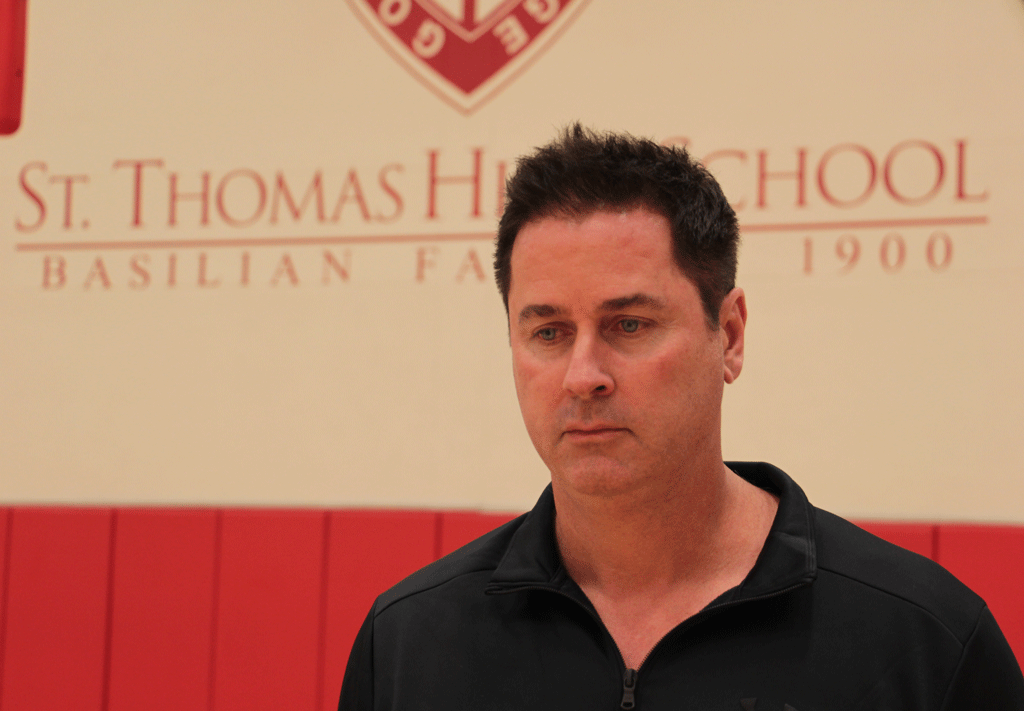
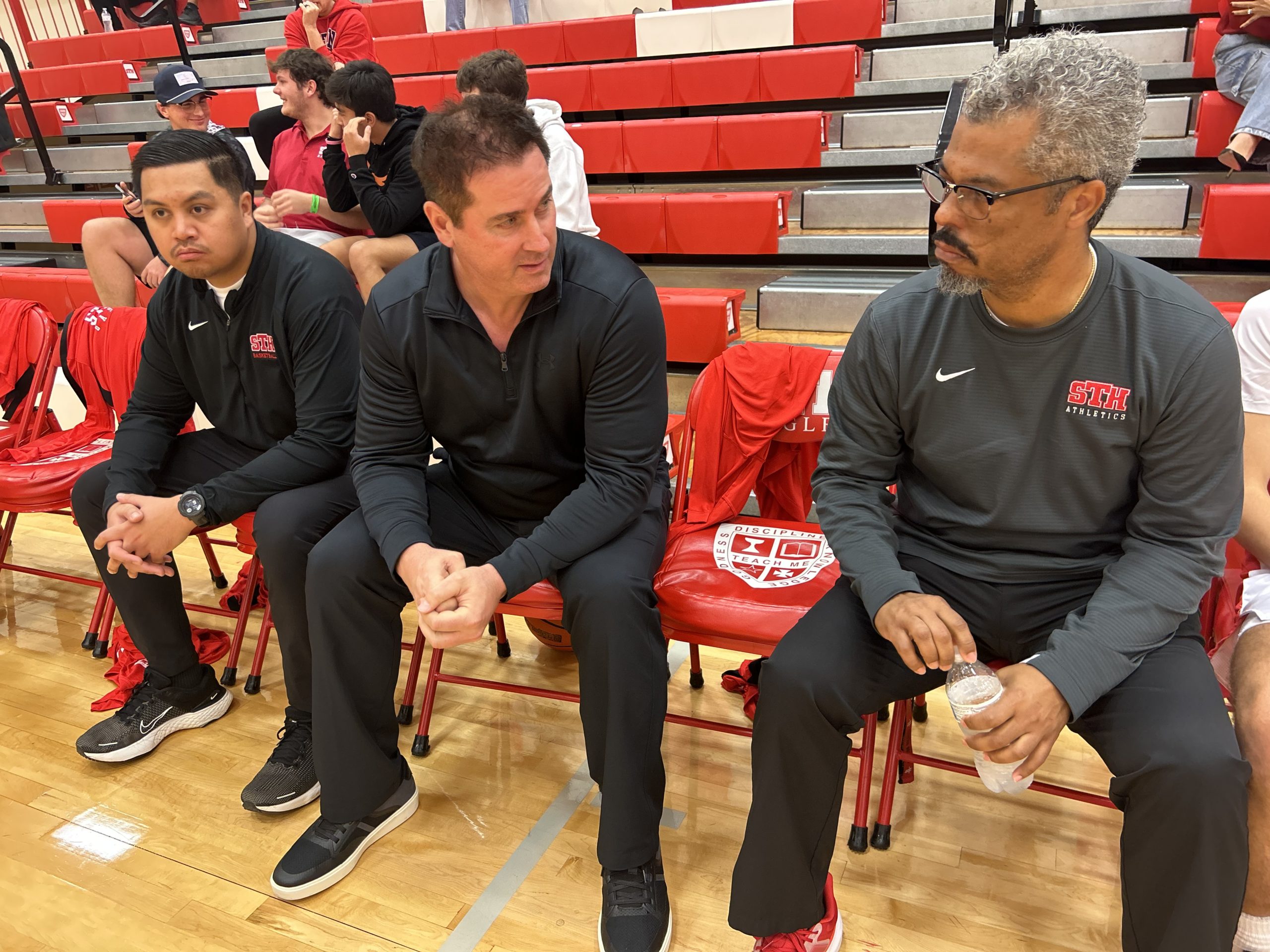
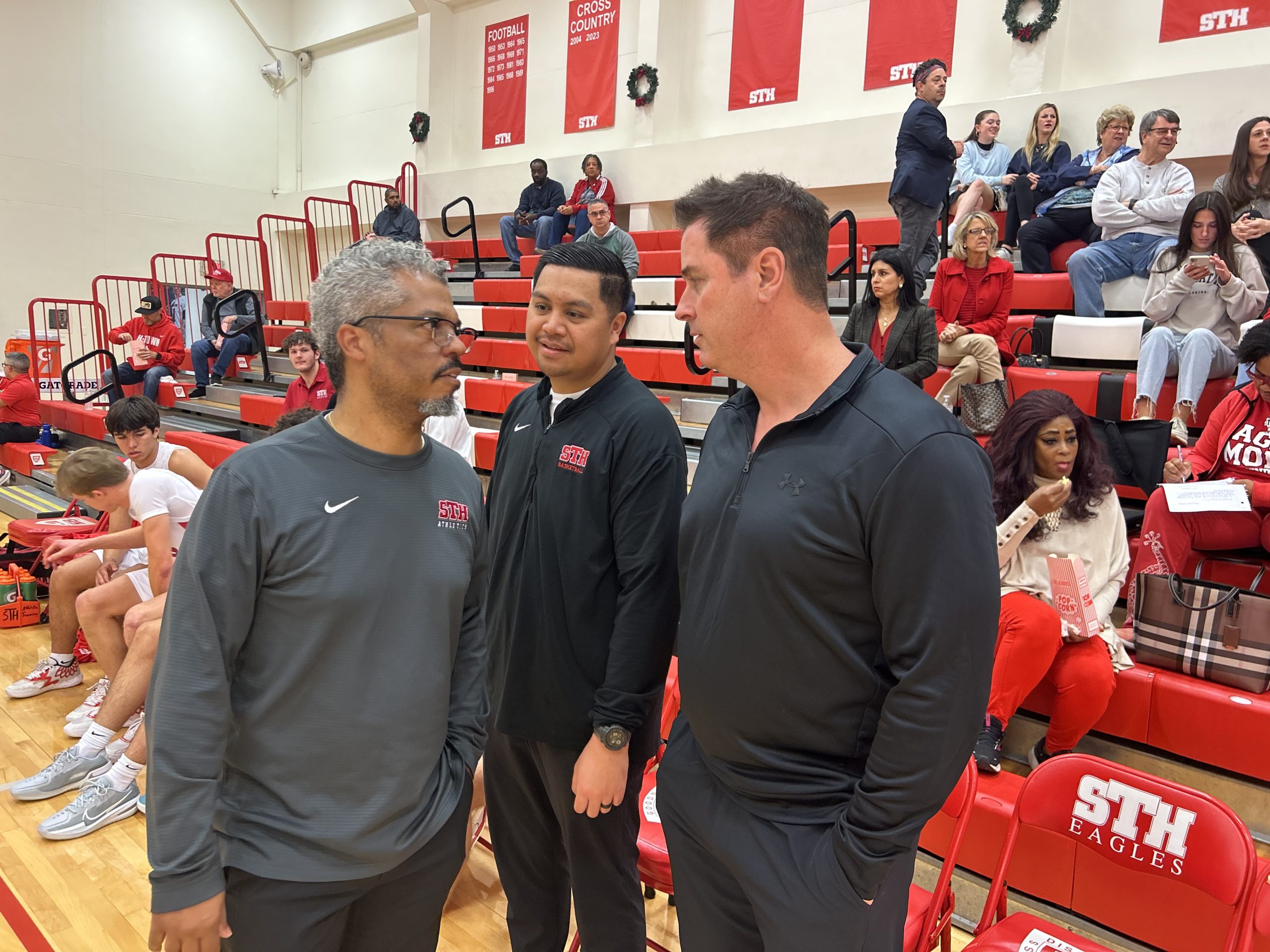
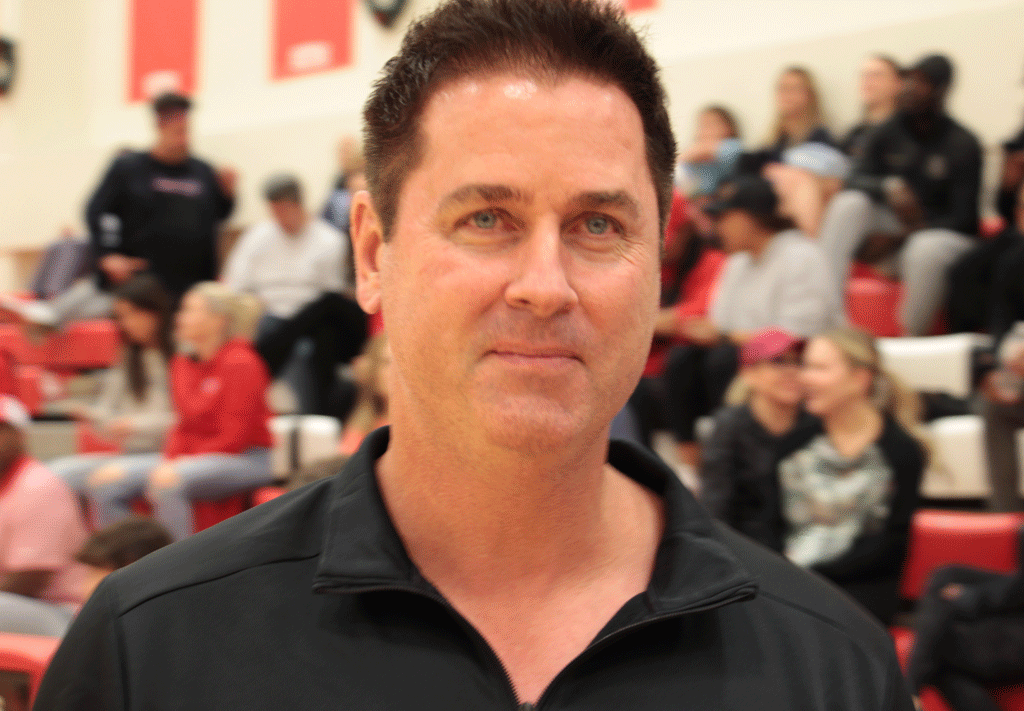
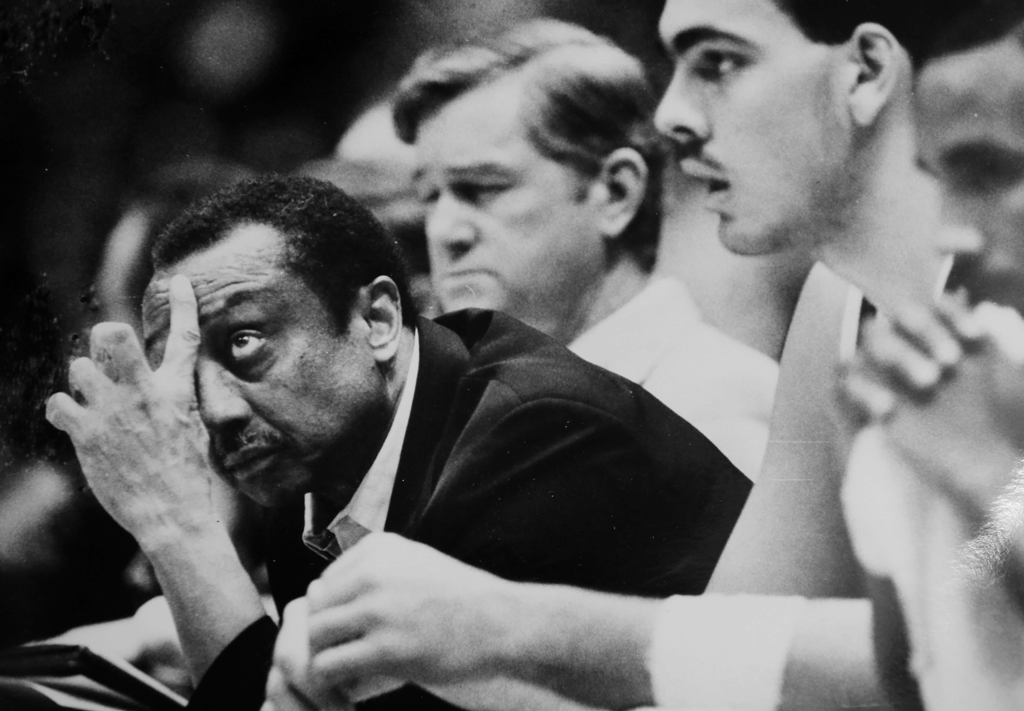
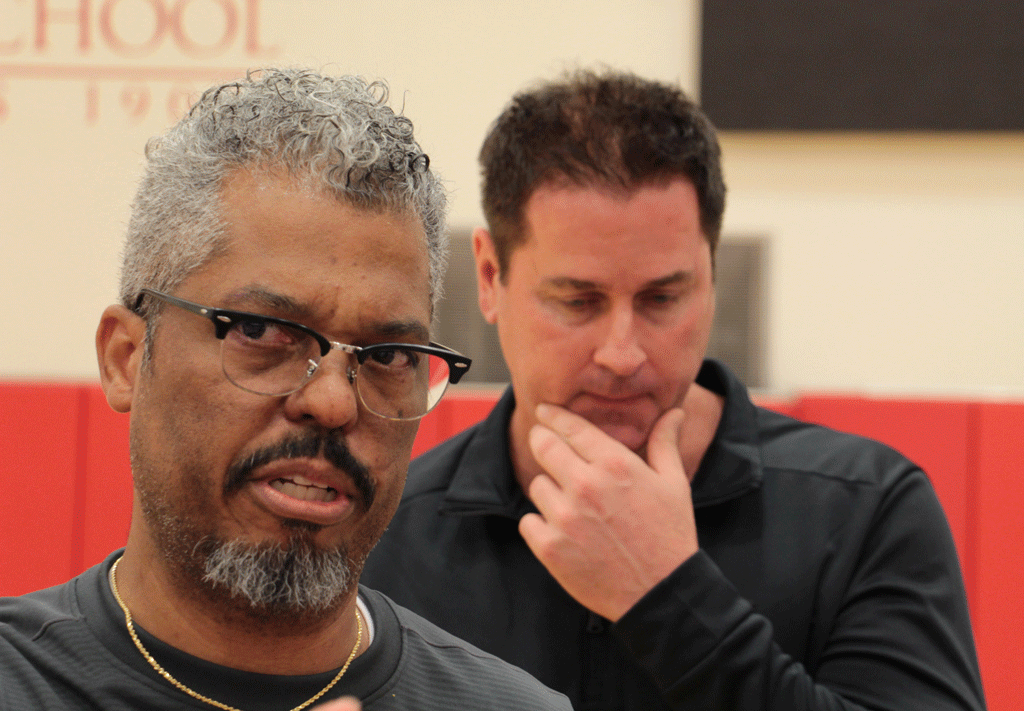
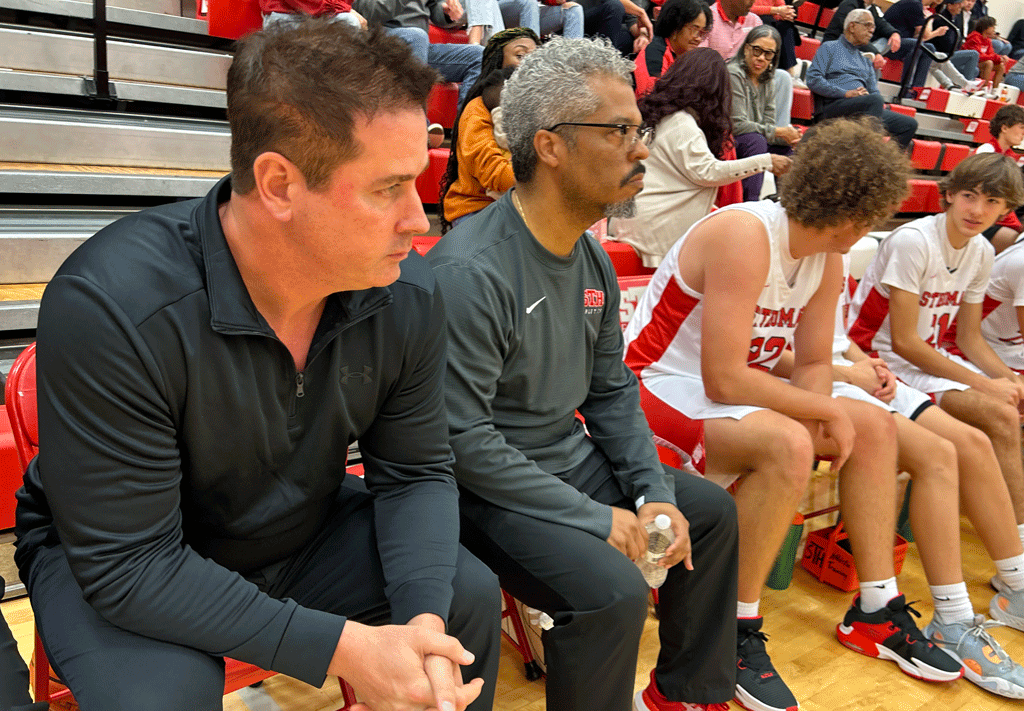
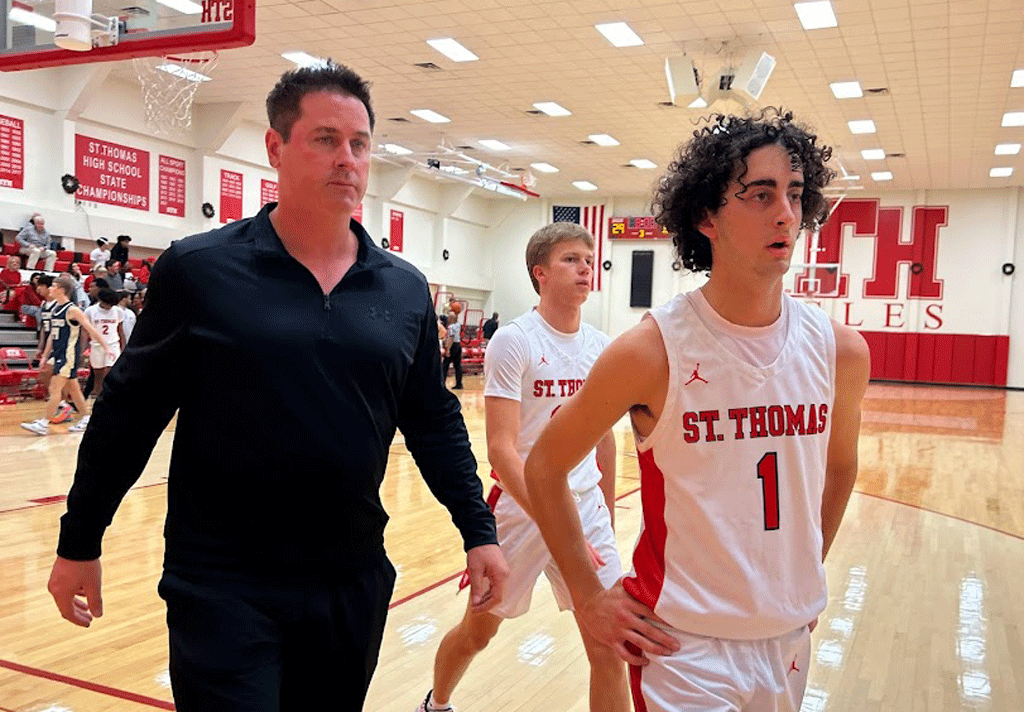
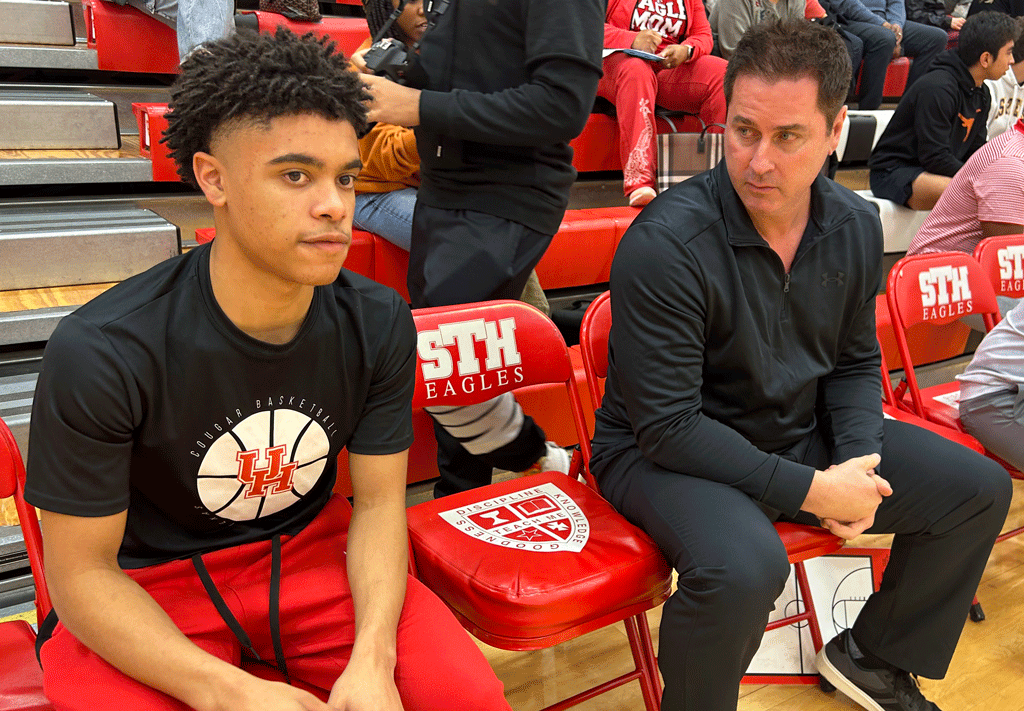
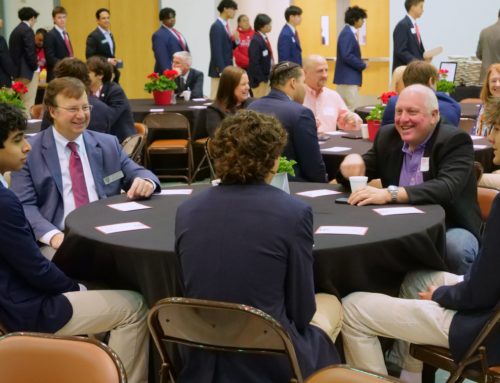
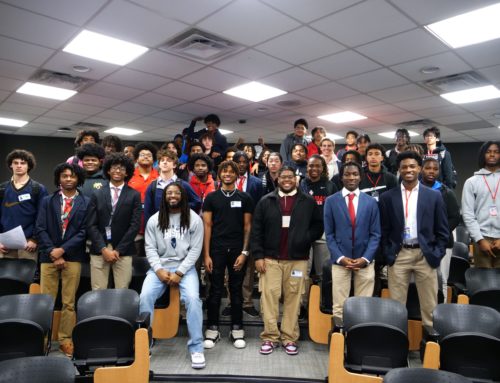
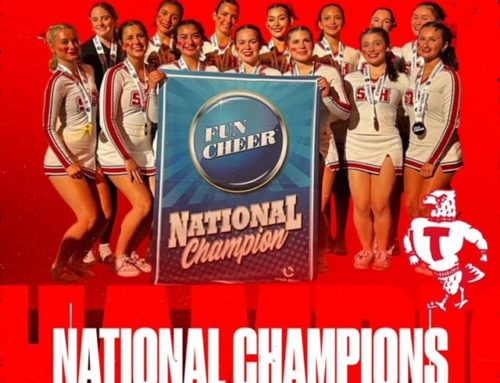
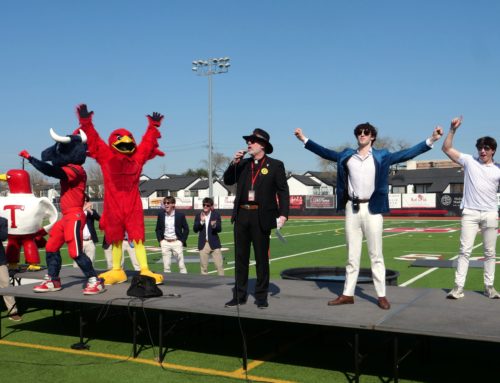
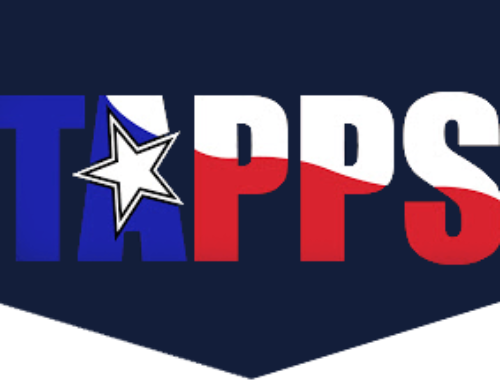


Leave A Comment